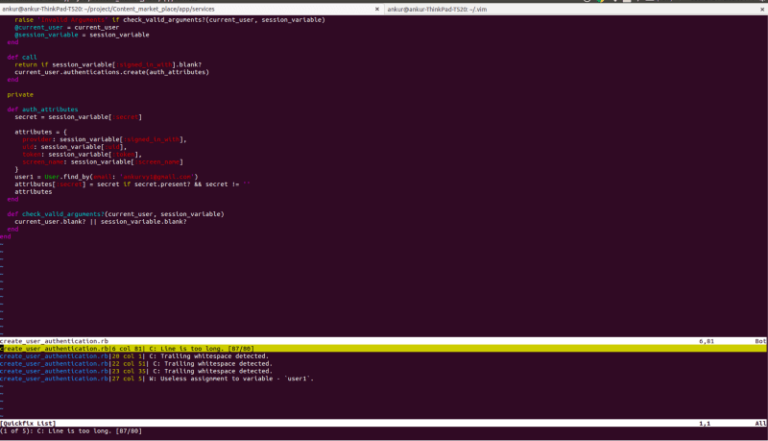


If a locally scoped project configuration file is not found in the current or subsequent parent directories, this global config file will be used. You can use a global config file in your home directory ( ~/.rubocop.yml) or XDG config directory ( ~/.config/rubocop/config.yml) to use the same checks for all projects. rubocop.yml file at the root of your project. Each reported offense includes all of the information needed to resolve it, such as a description of the offense and the file and line number where it occurred.Ī good rule of thumb is to run your test suite after using the autocorrect functionality to ensure that your code’s behavior has not changed unexpectedly. You may receive several errors after running the command (offenses). Without any configuration, RuboCop enforces many of the guidelines outlined in the community-driven Ruby Style Guide. $ bundle exec rubocop $ bundle exec rubocop src/lib Alternatively, you can specify a list of files and directories to be examined. If no arguments are passed to the command, it will check all Ruby source files in the current directory and all subdirectories. gem 'rubocop', require: falseĬheck the version that was installed: $ bundle exec rubocop -version 1.18.3 Running Rubocopīy typing rubocop in your project, you can run RuboCop with its default settings (or bundle exec rubocop if installed with Bundler). The require: false part tells Bundler.require not to require that specific gem in your code since it will only be used from the command line. If you’d rather use Bundler, place the code below into your Gemfile and then run bundle install.

To check which version is installed: $ rubocop -version 1.18.3 Installing Rubocop is easy with RubyGems: $ gem install rubocop “Code formatting is about communication, and communication is the professional developer’s first order of business.” You’ll learn how to include it in your Ruby project and configure it so that its output matches your expectations. RuboCop, the tool we’ll look at in depth in this article, is a good example of the latter. A linter will typically report violations, but it is usually up to the programmer to resolve the issue, whereas a code formatter applies its rules directly to the source code, automatically correcting formatting errors.Ĭreating a more consistent code style in a project usually necessitates the use of separate linting and formatting tools, but in some cases, a single tool can address both concerns.

A code formatter, on the other hand, is a tool that is concerned with formatting source code so that it strictly follows a pre-configured set of rules. A static code analysis tool known as a linter performs this checking. Linting is the automated detection of programmatic and stylistic errors in source code. Ruby Code Linting and Auto-formatting with RuboCop


 0 kommentar(er)
0 kommentar(er)
